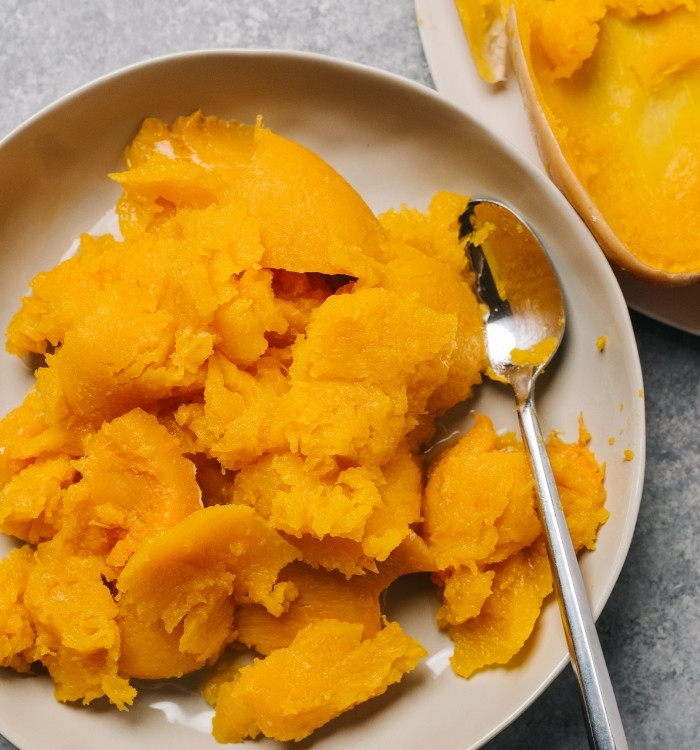
How to Make Butternut Squash Puree
Homemade Butternut Squash Puree can be enjoyed as a side dish or used as a substitute for pumpkin puree in baked goods, soups, and more! In this post, I’m sharing 5 ways to make butternut squash puree as well as how to store, freeze, thaw, and use it.
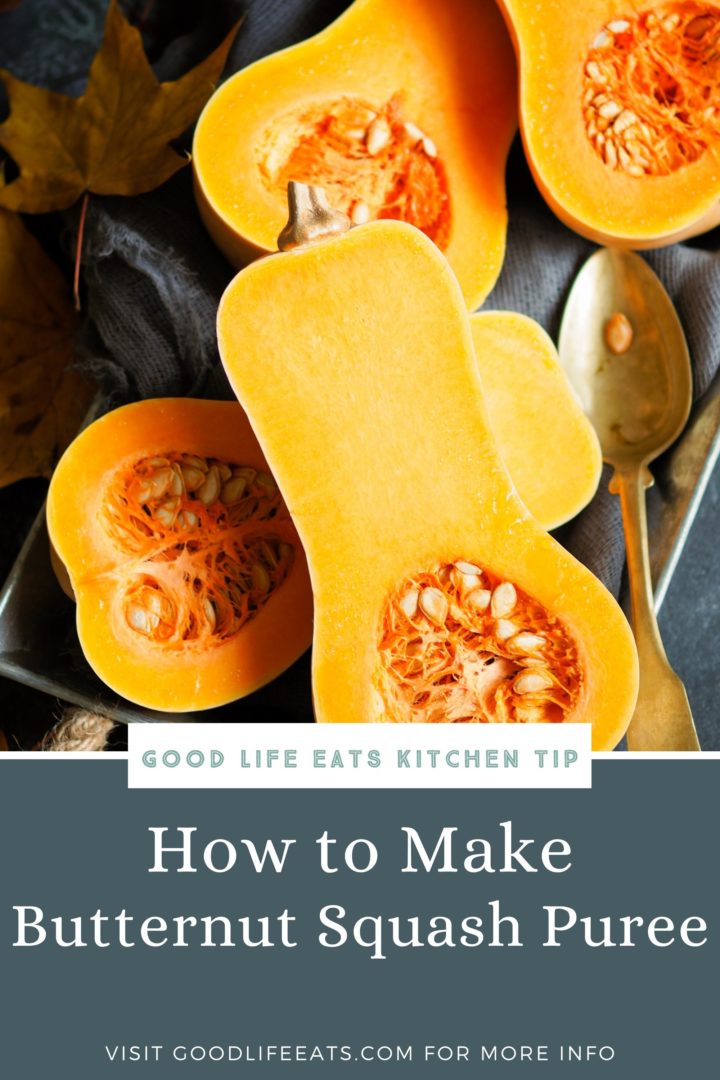
Once the temperature drops, it seems like everyone starts baking pumpkin bread, ordering PSLs, and generally going crazy over all things pumpkin.
Although I love pumpkin recipes during the cooler months and use pumpkin puree regularly in both sweet and savory recipes, I also like to make homemade butternut squash puree.
If you’ve never tried butternut squash puree before, you’re missing out! It’s easy to make and is a great pumpkin puree substitute.
Plus, butternut squash puree can be sweetened and spiced and served on its own as a side dish!
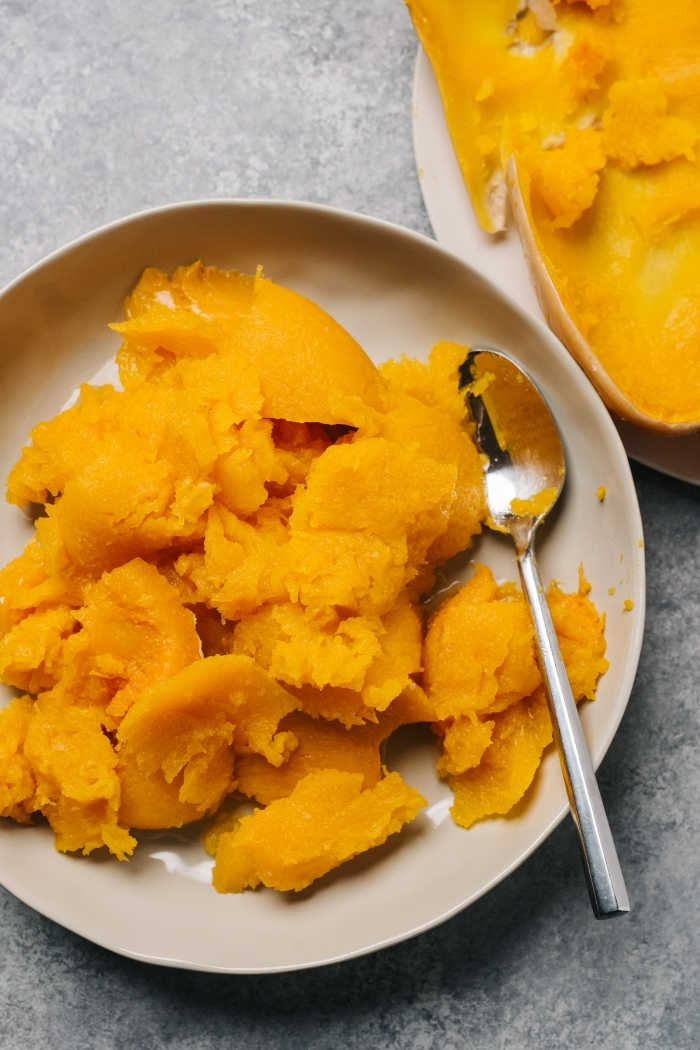
How to Make Butternut Squash Puree
There’s no single butternut squash puree recipe you have to use. I prefer baking a butternut squash and then pureeing it, but you can just as easily boil, steam, microwave, or pressure cook it!
1. Baked Butternut Squash Puree (Recommended)
After a butternut squash has been baked, it’s easy to scoop out the flesh and puree it. This is my preferred method for making butternut squash puree.
Here’s how you can make butternut squash puree by using a baked butternut squash:
- Wash the squash to remove any dirt.
- Carefully cut the squash in half.
- Scoop out the seeds and stringy membrane.
- Place the squash halves cut side down on a foil-lined baking tray.
- Bake the squash halves for 45 minutes to 1 hour at 350ºF, or until easily pierced with a fork.
- Remove from the oven and let cool until safe to handle.
- Scoop the flesh out of the squash and into the bowl of your food processor. Discard the skin.
- Puree the cooked squash in the food processor until smooth.
2. Boiled Butternut Squash Puree
This is one of the quicker methods for making homemade butternut squash puree, although it can result in a watery puree. I’ll explain how to drain excess moisture from your butternut squash puree later in this post!
- Wash the squash to remove any dirt.
- Carefully cut the squash in half.
- Scoop out the seeds and stringy membrane.
- Place the squash halves into a large pot.
- Fill the pot with water, just until the squash halves are fully submerged.
- Bring the water to a boil. Once boiling, reduce the heat to low and simmer for about 10 minutes.
- Once the squash is tender enough to pierce with a fork, drain the water (a colander comes in handy for this!).
- When cool enough to handle, scoop the flesh out of the squash and into the bowl of your food processor. Discard the skin.
- Puree the cooked squash in the food processor until smooth.
3. Steamed Butternut Squash Puree
To steam a butternut squash, you’ll need a wire steaming basket. This ensures that the squash never comes in direct contact with the water.
- Wash the squash to remove any dirt.
- Peel and cut the squash in half lengthwise.
- Scoop out the seeds and stringy membrane.
- Chop the squash into cubes.
- Place the squash halves into a steaming basket.
- Place the steaming basket into a large pot and add 1 cup water. (Make sure the squash is NOT touching the water directly!).
- Cook the squash, covered, for 10 to 15 minutes until fork tender.
- Puree the steamed squash in the food processor until smooth.
4. Instant Pot Butternut Squash Puree
To make Instant Pot butternut squash puree, use a 2-pound squash. If the squash is larger than that, you’ll need to cut it into fourths rather than halves.
- Wash the squash to remove any dirt.
- Scoop out the flesh and stringy membranes.
- Set a wire rack into a 6-quart (or larger) Instant Pot.
- Add 1 cup water to the Instant Pot.
- Lock on the lid and set the pressure valve to seal.
- Cook the squash halves on high pressure for 8 to 10 minutes.
- Naturally release the pressure for 5 minutes, then quick release for any remaining pressure.
- Once the squash is cool enough to handle, scoop out the flesh and into the bowl of your food processor. Discard the skin.
- Puree the cooked squash in the food processor until smooth.
5. Microwave Butternut Squash Puree
For this method, you’ll want to cut the squash into cubes. This helps it cook faster and more evenly.
- Wash the squash to remove any dirt.
- Cut the squash into 1-inch pieces. You’ll want to cut off the skin for this method.
- Place the squash pieces into a large microwave-safe bowl.
- Add a little water to the bowl. Cover loosely with a lid.
- Cook the squash pieces on full power for 5 to 10 minutes.
- Once fork tender, drain any excess water before adding the squash to a food processor.
- Blend until smooth.
How to Remove Excess Moisture From Butternut Squash Puree
Depending on how you cooked the butternut squash to make puree, it may contain excess moisture. Any extra moisture in the puree can affect the texture of baked goods, so it’s best to remove it prior to using or storing the puree.
If your puree contains extra moisture, the easiest way to get rid of it is to place a piece of cheesecloth in a metal sieve, then scoop the puree into the sieve and set it over a bowl for about an hour.
After 1 hour, the excess moisture should have drained into the bowl. At this point, the puree should be ready to store.
Storage Instructions
Butternut squash puree can be refrigerated or frozen for later. I recommend storing 1 cup of puree per bag or container. This will let you thaw the exact amount of puree you need for any recipe.
To store butternut squash puree in the fridge: Transfer to an airtight container or bag, label, date, and then refrigerate for up to three days.
To store butternut squash puree in the freezer: Transfer the puree to freezer-safe containers, freezer bags, ice cube trays, or vacuum bags.
I prefer using freezer bags that I’ve pressed the excess air out of and then flattened. Once frozen solid, I can store the flattened bags of puree upright in my freezer to save space!
Frozen butternut squash puree will last up to three months. Be sure to label and date the puree so you know what’s in each freezer bag. I also recommend putting the amount of puree on the label so you can thaw the exact amount you need.
How to Thaw Frozen Butternut Squash Puree
If you freeze homemade butternut squash puree, you may need to thaw it before using it in a recipe. Here are four ways to thaw frozen butternut squash puree:
- In the fridge: Simply transfer the frozen puree to the fridge and let it thaw overnight.
- On the counter: Place the frozen puree on the counter and let sit until thawed (2 or more hours, depending on the amount of puree in the container).
- In a bowl of water: If the frozen puree isn’t already in an airtight container, transfer it to one. Then, submerge the frozen puree in a bowl of warm water. The puree should thaw in an hour or less.
- In the microwave: You can also thaw butternut squash puree quickly using the defrost setting on your microwave. Check the puree every 2 to 3 minutes and stir to ensure it’s thawing evenly.
When Do You Need to Thaw Frozen Butternut Squash Puree?
Depending on what you’ll be using the frozen butternut squash puree for, you may or may not need to thaw it first.
You DON’T need to thaw frozen butternut squash puree if using in a smoothie or if you’ll be adding it straight to a soup or stew that’s going to simmer on the stovetop. The puree will thaw and cook directly in the hot soup.
You DO need to thaw frozen butternut squash puree if you’ll be mixing it into batters, doughs, overnight oats, and so forth. If adding the puree to a quick bread or cake batter, be sure and bring it to room temperature before using it.
Can Pumpkin Puree Be Substituted with Butternut Squash Puree?
Yes! Homemade butternut squash puree is a great substitute for pumpkin puree in any recipe.
For every 1 cup of pumpkin puree, substitute with 1 cup of butternut squash puree — simple as that!
Tips for Making Butternut Squash Puree
- Use a 1.5 to 2-pound squash: That’s roughly the size of squash I based all of the puree methods shared in this post off of.
- Choose your cooking method wisely: The flavor of your squash puree will be affected by the method in which you cook the squash. Steaming or boiling the squash will minimally affect the flavor, but may make it more watery.
- Drain the puree, as needed: Homemade butternut squash puree can sometimes be more watery than canned pumpkin puree. If your puree is watery, skim off the excess moisture and / or let it drain in a cheesecloth-lined sieve that’s been set over a bowl for about 1 hour.
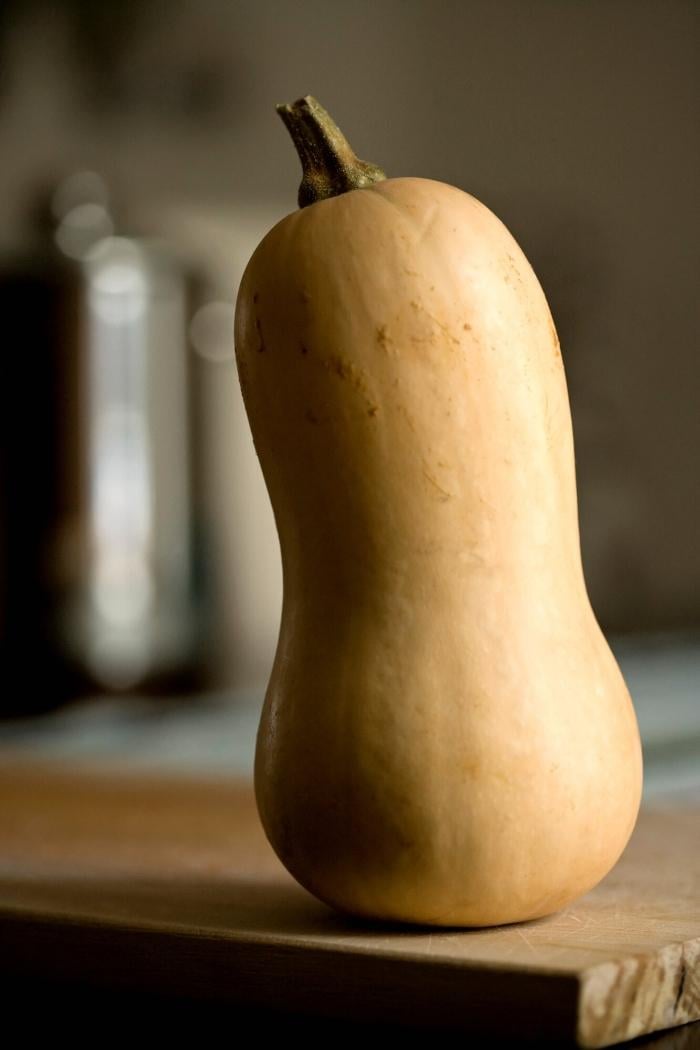
More Useful Kitchen Tutorials:
Freezing basil minimizes food waste and ensures you always have some on hand for soups, stews, sauces, and more! This post explains how to freeze basil 4 ways, plus you’ll get access to 10+ basil recipes.
Did you know that you can make microwave popcorn without the expense of purchasing it at the grocery store? Homemade Microwave Popcorn is super simple to make and is a great snack when you’re craving something a little salty and a little crunchy.
Knowing How to Bring Eggs to Room Temperature quickly is useful when baking cakes, cupcakes, waffles, and more. In this post, I’m sharing four methods for bringing eggs to room temperature and explaining why it’s important to do so.
In this post, I share the most common buttermilk substitutes as well as how to make buttermilk. It’s easier than you’d think to make your own buttermilk!
Freezing cheese extends its shelf life and is easy to thaw for future recipes. This guide explains how to freeze cheese, how long frozen cheese lasts in the freezer, and which cheeses can actually be frozen.
Stay Inspired in the Kitchen!
Want more delicious recipes, kitchen tips, and meal inspiration? Sign up for the Good Life Eats Newsletter and get:
✔ Tried-and-true recipes—from quick weeknight meals to special occasion favorites.
✔ Seasonal meal ideas—helping you make the most of fresh, in-season ingredients.
✔ Time-saving kitchen tips—boosting your confidence and creativity in the kitchen.
How to Make Butternut Squash Puree
Homemade Butternut Squash Puree can be enjoyed as a side dish or used as a substitute for pumpkin puree in baked goods, soups, and more!
Ingredients
- 2 lb. butternut squash
- Water
Instructions
Baked Butternut Squash Puree
- Wash the squash to remove any dirt.
- Carefully cut the squash in half.
- Scoop out the seeds and stringy membrane.
- Place the squash halves cut side down on a foil-lined baking tray.
- Bake the squash halves for 45 minutes to 1 hour at 350ºF, or until easily pierced with a fork.
- Remove from the oven and let cool until safe to handle.
- Scoop the flesh out of the squash and into the bowl of your food processor. Discard the skin.
- Puree the cooked squash in the food processor until smooth.
Boiled Butternut Squash Puree
- Wash the squash to remove any dirt.
- Carefully cut the squash in half.
- Scoop out the seeds and stringy membrane.
- Place the squash halves into a large pot.
- Fill the pot with water, just until the squash halves are fully submerged.
- Bring the water to a boil. Once boiling, reduce the heat to low and simmer for about 10 minutes.
- Once the squash is tender enough to pierce with a fork, drain the water (a colander comes in handy for this!).
- When cool enough to handle, scoop the flesh out of the squash and into the bowl of your food processor. Discard the skin.
- Puree the cooked squash in the food processor until smooth.
Steamed Butternut Squash Puree
- Wash the squash to remove any dirt.
- Peel and cut the squash in half lengthwise.
- Scoop out the seeds and stringy membrane.
- Chop the squash into cubes.
- Place the squash halves into a steaming basket.
- Place the steaming basket into a large pot and add 1 cup water. (Make sure the squash is NOT touching the water directly!).
- Cook the squash, covered, for 10 to 15 minutes until fork tender.
- Puree the steamed squash in the food processor until smooth.
Instant Pot Butternut Squash Puree
- Wash the squash to remove any dirt.
- Scoop out the flesh and stringy membranes.
- Set a wire rack into a 6-quart (or larger) Instant Pot.
- Add 1 cup water to the Instant Pot.
- Lock on the lid and set the pressure valve to seal.
- Cook the squash halves on high pressure for 8 to 10 minutes.
- Naturally release the pressure for 5 minutes, then quick release for any remaining pressure.
- Once the squash is cool enough to handle, scoop out the flesh and into the bowl of your food processor. Discard the skin.
- Puree the cooked squash in the food processor until smooth.
5. Microwave Butternut Squash Puree
- Wash the squash to remove any dirt.
- Cut the squash into 1-inch pieces. You’ll want to cut off the skin for this method.
- Place the squash pieces into a large microwave-safe bowl.
- Add a little water to the bowl. Cover loosely with a lid.
- Cook the squash pieces on full power for 5 to 10 minutes.
- Once fork tender, drain any excess water before adding the squash to a food processor.
- Blend until smooth.

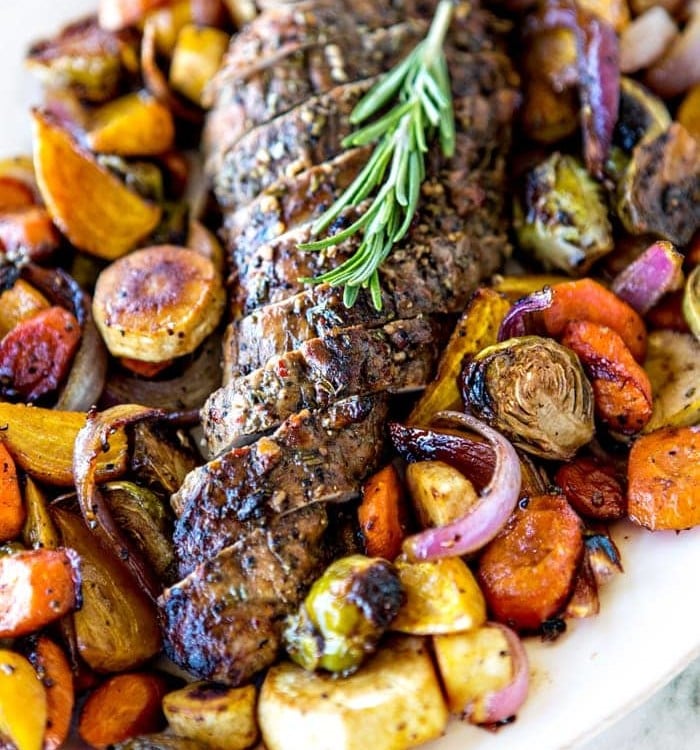
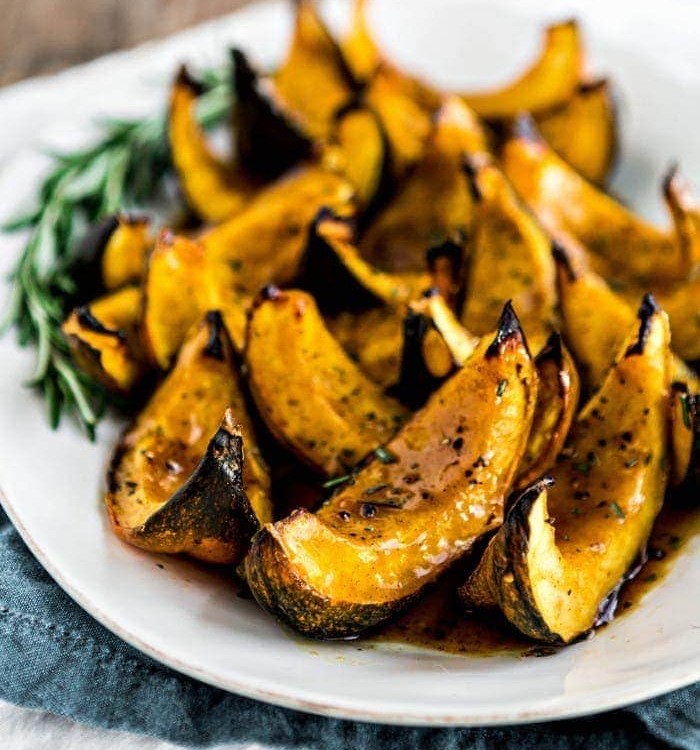
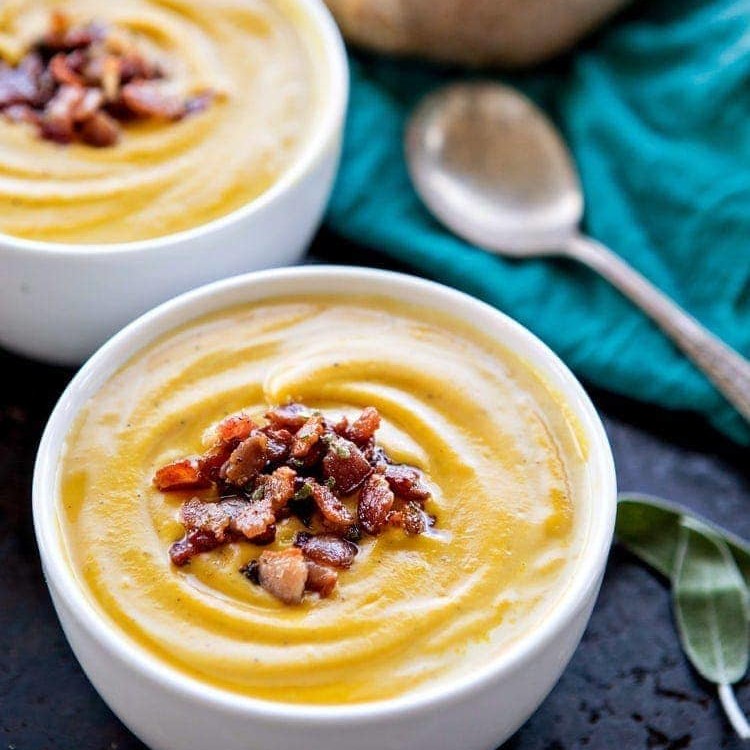
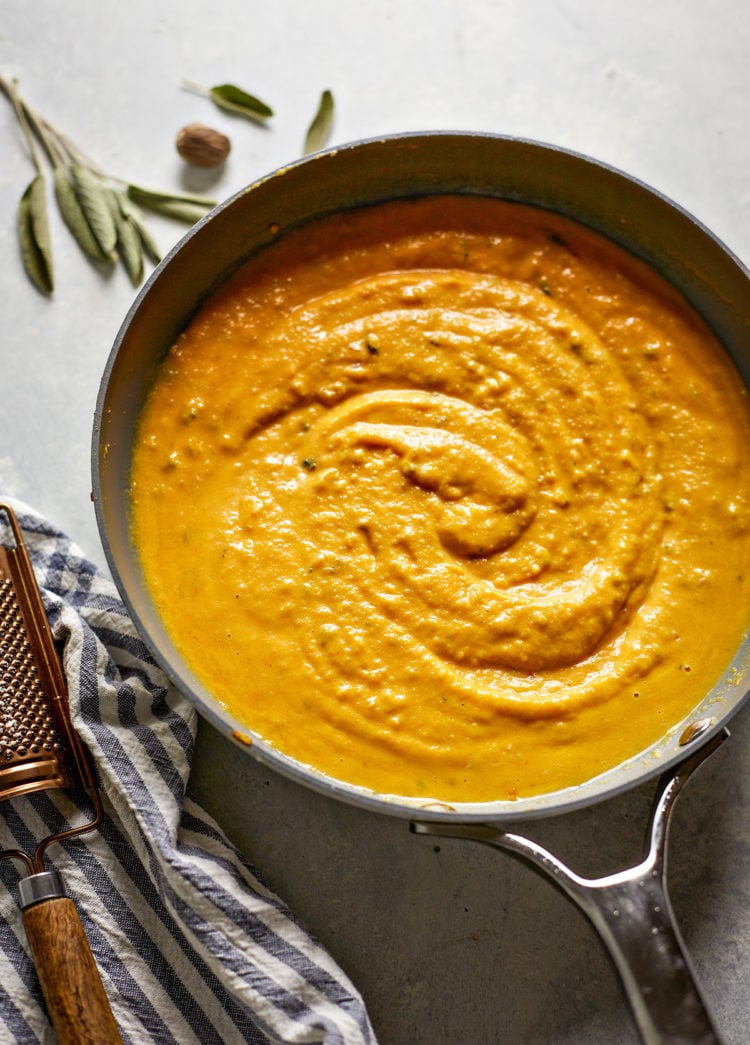
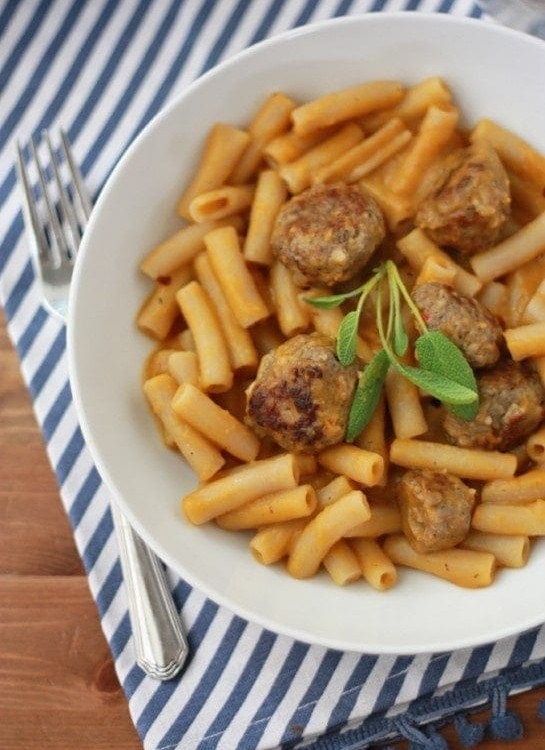
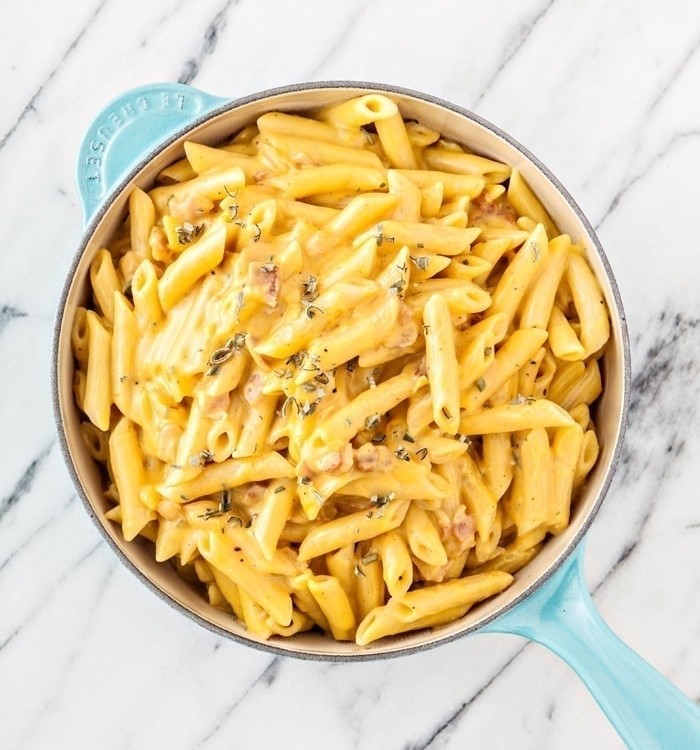
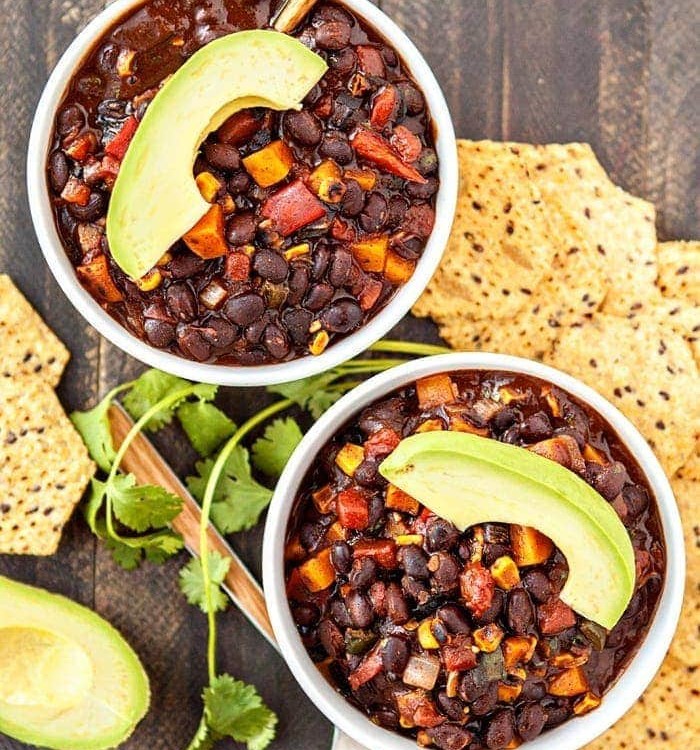
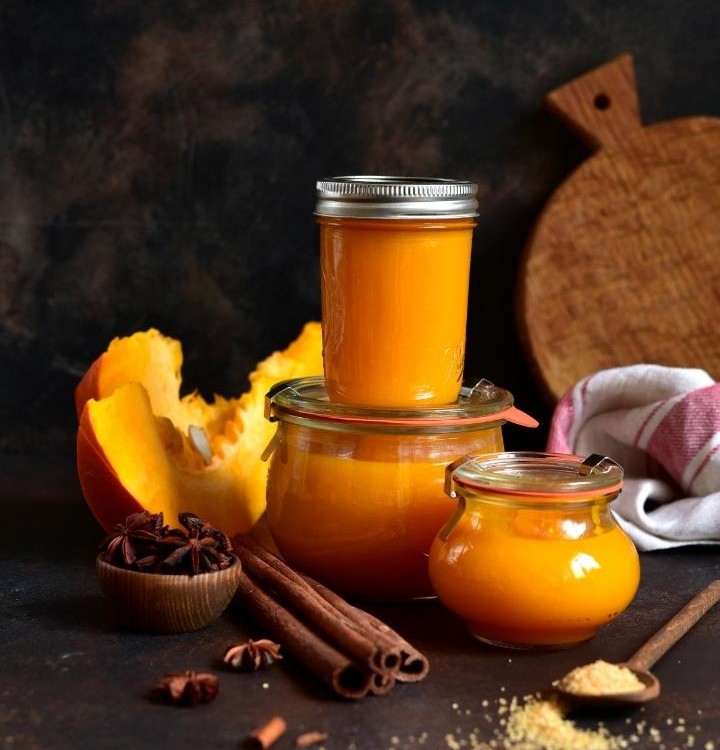

Leave a Comment